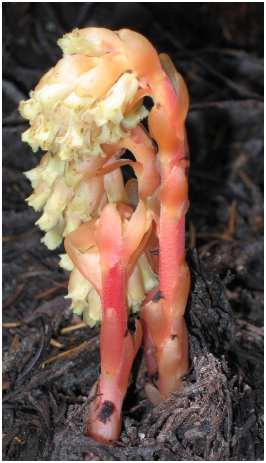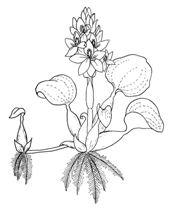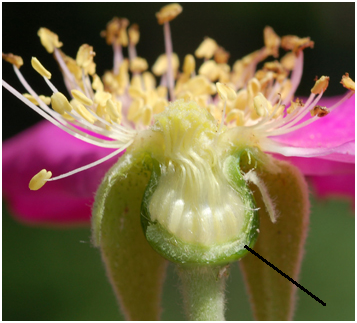The picture shows the Monotrapa plant. It is a/an:

1. Insectivore
2. Saprotroph
3. Root parasite
4. Stem parasite

2. Saprotroph
3. Root parasite
4. Stem parasite
Match each item in COLUMN I with one in COLUMN II and select the correct answer from the codes given:
|
|
COLUMN I [Elongated nodes in thalamus] |
|
COLUMN II [Example] |
|
A. |
Anthophore |
a. |
Gynandropsis |
|
B. |
Androphore |
b. |
Silene |
|
C. |
Gynophore |
c. |
Passion flower |
|
D. |
Gynandrophore |
d. |
Capparis |
Codes
A B C D
1. b c d a
2. b d a c
3. c b a d
4. d c b a
In the given diagram the floral features are seen in the members of Family:
1. Liliaceae
2. Solanaceae
3. Fabaceae
4. Brassicaceae
The stem thorns seen in the picture can belong to:
|
1. Opuntia |
 |
The given floral formula belongs to:

1. Fabaceae
2. Solanaceae
3. Liliaceae
4. Brassicaceae
What types of leaves are respectively shown in the given picture?
| 1. | Palmate and Pinnate | 2. | Pinnate and Palmate |
| 3. | Pentapinnate and Heptapinnate | 4. | Heptapinnate and Pentapinnate |
The phyllotaxy shown in the given picture is:
| 1. | Alternate | 2. | Opposite |
| 3. | Whorled | 4. | Random |
The diagram shows water hyacinth. It reproduces by the sub aerial modification of stem known as:

1. Runner
2. Stolon
3. Offset
4. Sucker
Match type of adhesion of stamens with example and select the correct answer from the codes given:
| Adhesion of stamens | Example | ||
| A. | Epipetalous | a. | Datura |
| B. | Epiphyllous | b. | Tulip |
| C. | Gynandrous | c. | Calotropis |
Codes
| A | B | C | |
| 1. | a | b | c |
| 2. | b | a | c |
| 3. | c | a | b |
| 4. | a | c | b |
The arrow shows structure where basal portions of the calyx, the corolla, and the stamens form a cup-shaped tube. This is called as:

1. Thalamus
2. Gynandrophore
3. Peduncle
4. Hypanthium









